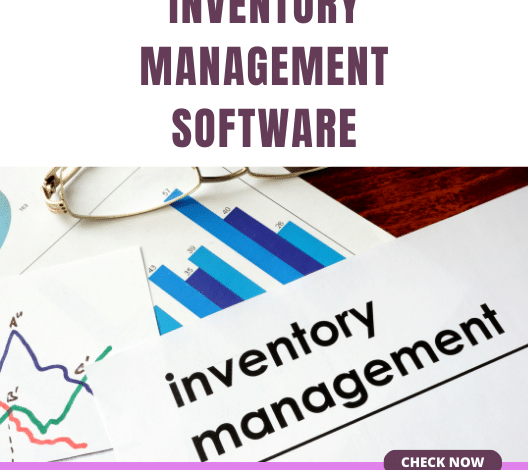Inventory Management Software
Maximize Efficiency and Minimize Costs with the Right Inventory Management Software

Inventory Management Software
In today’s fast-paced business world, inventory management is critical to maximizing efficiency and minimizing costs.
Without proper inventory management, businesses can face a myriad of issues, from understocking to overstocking, which can ultimately negatively impact their bottom line.
Fortunately, with the right inventory management, companies can optimize their inventory levels and streamline their operations. In this article, we’ll delve into the benefits of using inventory management software, explore the different types available, and provide tips on how to choose the right one for your business. Whether you’re a small business owner or a large corporation, the right inventory management can help you save time, money, and resources while improving customer satisfaction. So, let’s dive in and discover how you can take your inventory management to the next level with the right solution.
The Importance of Inventory Management
Inventory management is a critical aspect of any business that deals with physical products. It involves keeping track of stock levels, organizing products, and ensuring that the right products are in the right place at the right time. Proper inventory management can help businesses reduce waste, avoid stockouts, and save money by minimizing the amount of inventory they need to keep on hand. It can also help businesses improve customer satisfaction by ensuring that products are always available when customers need them.
What is Inventory Management Software?
Inventory management software is a tool that helps businesses manage their inventory levels and streamline their operations. It automates many of the manual processes involved in inventory management, such as tracking stock levels, organizing products, and generating reports. Inventory management software can also integrate with other business tools, such as accounting software and point-of-sale systems, to provide a comprehensive view of the business.
Benefits of Using Inventory Management Software
There are many benefits to using inventory management software, including:
### 1. Improved Efficiency
Inventory management software can help businesses automate many of the manual processes involved in inventory management, such as tracking stock levels and generating reports. This can save businesses time and reduce the risk of errors.
### 2. Reduced Costs
By optimizing inventory levels, businesses can reduce the amount of inventory they need to keep on hand, which can save them money on storage costs and reduce the risk of waste.
### 3. Improved Customer Satisfaction
By ensuring that products are always available when customers need them, businesses can improve customer satisfaction and loyalty.
### 4. Increased Accuracy
Inventory management software can help businesses reduce the risk of errors by automating many of the manual processes involved in inventory management.
### 5. Better Decision Making
Inventory management software can provide businesses with real-time data and insights into their inventory levels, which can help them make better decisions about purchasing, production, and sales.
Types of Inventory Management Software
There are several types of inventory management software available, including:
### 1. On-Premise Inventory Management Software
On-premise inventory management software is installed on the business’s own servers and is managed internally. This type of software can provide businesses with greater control over their inventory data and can be more customizable than cloud-based solutions.
### 2. Cloud-Based Inventory Management Software
Cloud-based inventory management software is hosted on remote servers and accessed through the internet. This type of software is typically more affordable than on-premise solutions and can be accessed from anywhere with an internet connection.
### 3. Open-Source Inventory Management Software
Open-source inventory management is free to use and can be customized to meet the business’s specific needs. However, it requires technical expertise to set up and maintain.
Key Features to Look for in Inventory Management Tools
When choosing inventory management, there are several key features to look for, including:
### 1. Inventory Tracking
Inventory tracking is the core function of inventory management software. The tools should be able to track stock levels, monitor inventory movement, and generate reports.
### 2. Barcode Scanning
Barcode scanning can help businesses track inventory movement and reduce the risk of errors.
### 3. Purchase Order Management
Purchase order management can help businesses track orders, manage suppliers, and automate the purchasing process.
### 4. Sales Order Management
Sales order management can help businesses track sales orders, manage customers, and automate the sales process.
### 5. Integration with Other Business Tools
Integration with other business tools, such as accounting tools and point-of-sale systems, can provide businesses with a comprehensive view of their operations.
Choosing the Right Inventory Management Tools for Your Business
When choosing inventory management, it’s important to consider the business’s specific needs and budget. Businesses should consider factors such as the type of inventory they manage, the number of users who will need access to the tools, and any integrations they require. It’s also important to choose a tools solution that is user-friendly and has a robust support system.
Integrating Inventory Management with Other Business Tools
Integrating inventory management with other business tools, such as accounting and point-of-sale systems, can provide businesses with a comprehensive view of their operations. This can help businesses make better decisions about purchasing, production, and sales.
Best Practices for Using Inventory Management Tools
To get the most out of inventory management, businesses should follow these best practices:
### 1. Regularly Update Inventory Data
It’s important to regularly update inventory data to ensure that the tools have accurate information about stock levels.
### 2. Train Employees
Employees should be trained on how to use the tools to ensure that they can effectively manage inventory levels.
### 3. Monitor Key Performance Indicators
Businesses should monitor key performance indicators, such as inventory turnover and stockouts, to identify areas for improvement.
### 4. Continuously Improve Processes
Inventory management can help businesses identify areas for improvement in their inventory management processes. It’s important to continuously analyze and improve these processes to maximize efficiency and minimize costs.
The Costs of Inventory Management Tools
The cost of inventory management tools can vary depending on the type of tools and the features included. On-premise solutions can be more expensive than cloud-based solutions, and additional features such as barcode scanning and integrations can also increase the cost. However, the benefits of using inventory management can far outweigh the costs, especially for businesses that manage a large amount of inventory.
Conclusion Inventory Management Tools
Proper inventory management is critical to maximizing efficiency and minimizing costs in today’s fast-paced business world. Inventory management can help businesses optimize their inventory levels and streamline their operations. When choosing inventory management, businesses should consider factors such as the type of inventory they manage, the number of users who will need access to the tools , and any integrations they require. By following best practices and continuously improving processes, businesses can get the most out of their inventory management and take their operations to the next level.
Read More Article: software manajemen keuangan



